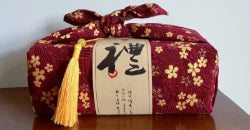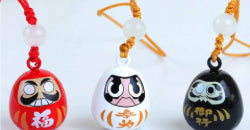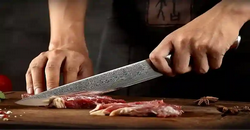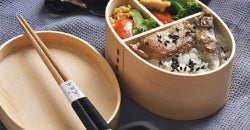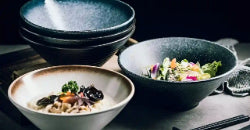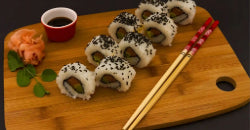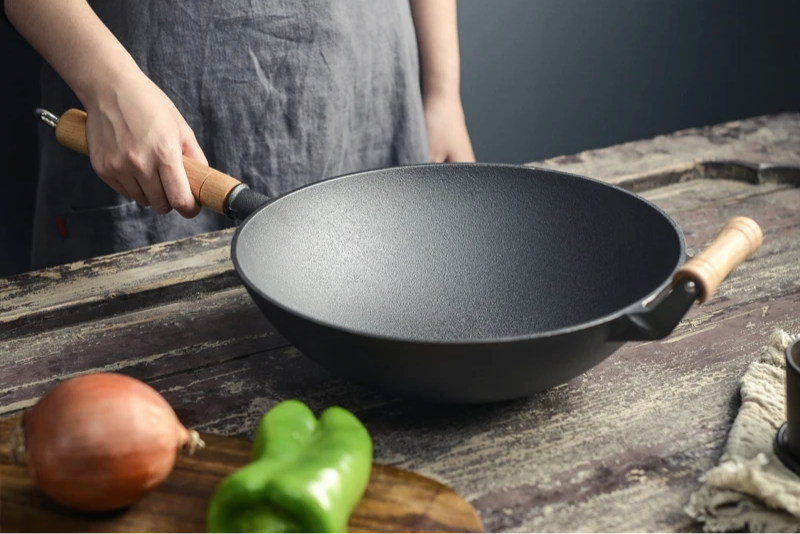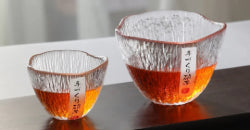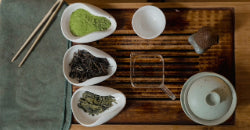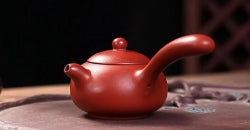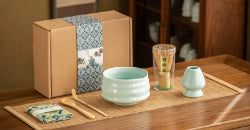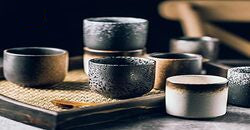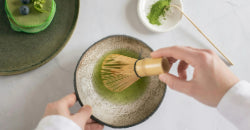Discovering traditional Japanese dishes: a culinary journey to the heart of Japan

Japanese cuisine is more than just a collection of recipes; it represents a true cultural expression that combines simplicity, aesthetics, and refined flavors. Renowned for its balance of fresh ingredients and meticulous preparation techniques, it has conquered taste buds around the world. This culinary journey to the heart of Japan takes you on a journey through more than 15 traditional Japanese dishes , where each dish tells a unique story linked to the country's traditions.
1. Sushi: symbol of Japanese gastronomy
Among Japan's iconic dishes, sushi stands out for its simplicity and refinement. This dish, composed of vinegared rice and slices of raw fish, has become the standard-bearer of Japanese cuisine internationally. In Japan, sushi is not just a meal; it's an art passed down from generation to generation, with chefs training for years to master the techniques necessary for its preparation.
The types of sushi vary, but they all share the same attention to detail:
- Nigiri : A piece of rice topped with a slice of raw fish or omelet, sometimes garnished with wasabi. This is sushi in its purest form.
- Maki : Rolls of rice and fish or vegetables, wrapped in a sheet of nori seaweed, often cut into bite-sized pieces.
- Sashimi : Raw fish cut into thin slices, usually served with daikon radish and soy sauce.
- Temaki : Nori cones filled with rice and fish or vegetables, often eaten with dishes for a more casual meal.
Sushi is often accompanied by pickled ginger and wasabi, which add extra dimensions to the subtle flavors of the fish. Also, if you're looking for Japanese cooking accessories, check out our collection .
2. Japanese Noodles (U don, r amen and soba) : a comforting tradition
Ramen , soba , and udon are staples of Japanese cuisine , each providing a unique and comforting dining experience.
- Ramen : These noodles, served in a rich and fragrant broth, are a classic Japanese street food. The broth can be made from miso, soy, or tonkotsu (pork bones), and is often topped with meat, narutomaki (fish roll), eggs, and vegetables.
- Soba : Thin buckwheat noodles, soba are eaten hot or cold, often dipped in a soy-based sauce. The dish zaru soba (cold soba served on a bamboo tray) is particularly popular in summer for its freshness.
- Udon : These thick wheat flour noodles are served in hot broth, sometimes with tempura or other toppings. Their chewy texture makes them a popular choice during the winter months.
Each type of noodle reflects a distinct region and culinary tradition of Japan, offering insight into the diversity of Japanese cuisine .
3. Yakitori: the famous Japanese skewers
Yakitori are grilled chicken skewers, a typical dish of izakayas (Japanese bistros ) where Japanese people gather to drink and eat in good company. The simplicity of the ingredients—chicken, leeks, sometimes even chicken skin or liver—is enhanced by charcoal grilling and a sweet and savory sauce made with soy, mirin, and sugar. Each bite is a concentrate of flavors that evokes conviviality and evenings spent with friends.
4. Omurice: rice omelette
Omurice is a dish that symbolizes the fusion of Japanese cuisine and Western influences. Originating in the late 19th century , this simple yet delicious dish combines fried rice, usually with chicken, wrapped in a thin omelet. The dish is often topped with ketchup or demi-glace sauce, resulting in a mild, comforting taste reminiscent of home cooking. It's a popular dish in izakayas and school cafeterias, appreciated for its simplicity and comforting feel.
5. Tempura: delicious doughnuts stuffed to perfection
Tempura is one of the most refined dishes in Japanese cuisine , despite its apparent simplicity. Imported from Portugal in the 16th century, it was adapted by the Japanese to become a culinary art. The key to tempura lies in its light batter, which subtly coats vegetables, seafood, or even shiso leaves before being fried to a precise temperature. The result is a snack or main dish that combines crunch and lightness, often served with a sauce made from soy and grated daikon.
6. Donburi: A complete meal in one bowl
Donburi is a simple yet complete dish that embodies the essence of Japanese cuisine : a bowl of white rice topped with a variety of ingredients, ranging from beef (as in gyudon ) to seafood (as in unadon , with eel). Katsudon , made with breaded and fried pork, is another popular example of donburi. This dish is quick to prepare, yet offers a depth of flavor that recalls home cooking and the comfort of family meals.
7. Onigiris: the simplicity of rice enhanced
Onigiri are triangular or ball-shaped rice balls, often wrapped in a sheet of seaweed to hold them in shape and add an umami flavor. Stuffed with salted plum (umeboshi), salmon, or even tuna mayonnaise, these convenient and delicious snacks are a staple in bento boxes and travel. Though simple, onigiri are a perfect example of the importance of rice in Japanese cuisine , where each grain is treated with respect and care.
8. Mochi: the soft and chewy delight
Mochi is more than just a dessert; it's a symbol of prosperity and happiness in Japan. These sticky rice cakes, often filled with red bean paste (anko), are eaten at festivals and ceremonies. Their unique soft yet elastic texture makes them an irresistible treat. Mochi is also the main dish at mochitsuki , a traditional mochi-making ceremony, where rice is beaten by hand until it becomes smooth and elastic.
9. Sukiyaki and Nabemono: The Japanese Art of Sharing

Sukiyaki and nabemono (literally meaning "things in a pot") are dishes that embody the spirit of sharing and conviviality in Japanese cuisine . Sukiyaki is a dish where thin slices of beef, vegetables, and tofu are cooked in a sweet and savory soy - based sauce. It is often eaten at family gatherings or among friends, with the pot placed in the center of the table for everyone to help themselves.
Nabemono , on the other hand , is a collection of several types of stews, often based on vegetables and fish, which are slowly cooked in a rich broth. These dishes are particularly popular during the winter months for their ability to warm the body and soul.
10. Chankonabe: the meal of sumo champions

Chankonabe is a rich and nutritious stew traditionally eaten by sumo wrestlers to maintain their weight. This dish consists of chunks of chicken, fish, tofu, and vegetables simmered in a flavorful broth. Although intended to provide a high amount of calories, chankonabe is a healthy and balanced dish that demonstrates the importance of nutrition in Japanese culture.
11. Oden: Comfort in Winter
Oden is a quintessential winter dish, made with various ingredients simmered in a dashi broth. White radish, eggs, tofu, and fish noodles are among the traditional ingredients that make up this comforting dish. It is often served in yatai (a Japanese restaurant )
during the cold months, where passersby can enjoy this piping hot dish to warm up. Oden is also a staple in Japanese homes during the winter, where it is prepared in a large pot and shared with family. Its popularity lies in its simplicity and comforting qualities, making this dish a mainstay of Japanese winter cuisine.
12. Takoyaki: the chicken balls of Japanese street food
Takoyaki is one of the most iconic Japanese street food dishes, originating from the Kansai region, particularly Osaka. These balls of dough filled with octopus pieces are baked in special molds, giving them their characteristic round shape. Served piping hot, they are usually topped with mayonnaise, takoyaki sauce, dried bonito flakes, and sometimes seaweed powder. Takoyaki is not only a delight to the palate, but also a symbol of the conviviality and festive spirit that characterize Japanese festivals.
13. Tonkatsu: Japanese Fried Pork
Tonkatsu is a breaded and fried pork dish, often served with finely shredded cabbage, white rice, and miso soup. This dish is a Japanese adaptation of Wiener schnitzel, but with a local twist: the meat is coated in panko, a light and airy Japanese breadcrumb, which gives a particularly crispy texture to the outside while keeping the meat juicy on the inside. Tonkatsu is often accompanied by tonkatsu sauce, a thick, sweet sauce that enhances the flavor of the meat.
14. Karaage: Japanese-style fried chicken
Karaage is another fried chicken specialty, but Japanese-style. Unlike Western nuggets, the chicken is first marinated in a mixture of soy, sake, ginger, and garlic , before being lightly coated in potato starch or flour and deep-fried until crispy. These chicken bites are a favorite in bento boxes and picnics, and are often served with a slice of lemon for a refreshing touch.
15. Gyudon: the tasty beef bowl
Gyudon is a particularly popular donburi , consisting of strips of beef cooked in a sweet and savory sauce made with soy, mirin, and dashi, and served over a bowl of white rice. This quick and easy dish is a comfort food for many Japanese people, and it's often garnished with pickled ginger for a contrasting flavor.
Bonus: Japanese Desserts ( Dorayaki, Yokan, Anmitsu, and more)
Finally, no Japanese meal would be complete without a typical dessert. Besides mochi , other Japanese sweets worth mentioning are:
- Dorayaki : Japanese pancakes filled with red bean paste.
- Anmitsu : A refreshing dessert made with agar-agar jelly, fruit, red beans, and black sugar syrup.
- Yokan : A sweet jelly made from red bean paste and agar-agar, often served in thick slices.
Conclusion: Japanese cuisine, a living cultural heritage
Japanese cuisine is not just about individual dishes; it is a living expression of Japan's history, culture, and traditions. Every dish, from sushi to mochi , ramen to takoyaki , tells a story of craftsmanship, respect for ingredients, and shared enjoyment around the table. Exploring these traditional Japanese dishes reveals not only delicate flavors and refined cooking techniques, but also a philosophy of life where respect for nature and harmony are at the heart of every meal.











































